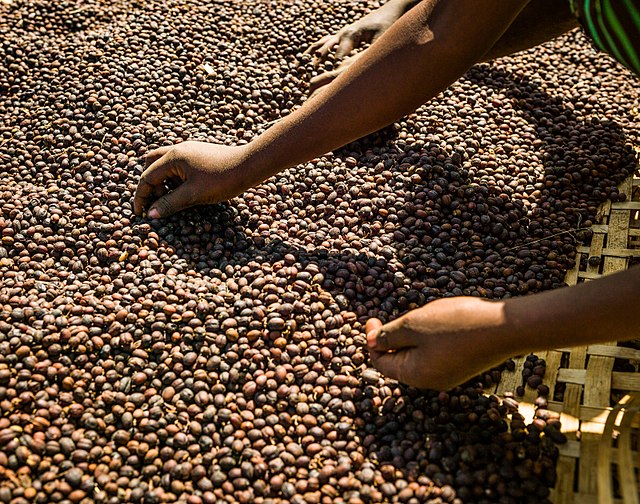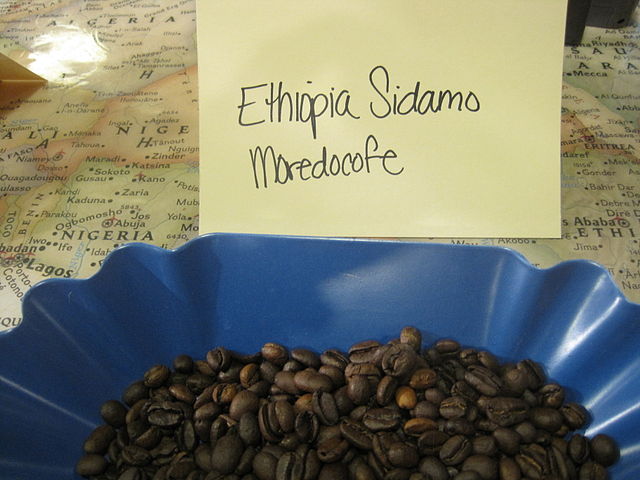Coffee production in Ethiopia
Coffee production in Ethiopia is a longstanding tradition which dates back dozens of centuries. Ethiopia is where Coffea arabica, the coffee plant, originates. The plant is now grown in various parts of the world; Ethiopia itself accounts for around 17% of the global coffee market. Coffee is important to the economy of Ethiopia; around 30-35% of foreign income comes from coffee, with an estimated 15 million of the population relying on some aspect of coffee production for their livelihood. In 2013, coffee exports brought in $300 million, equivalent to 24% of that year's total exports.
An example of the coffee bean sorting process in Hawassa, Sidama Region
A training seminar for coffee tasters (cuppers) in 2003
A Coffea arabica tree on Lake Tana in Bahir Dar
Ethiopian Sidamo beans
Coffea arabica, also known as the Arabica coffee, is a species of flowering plant in the coffee and madder family Rubiaceae. It is believed to be the first species of coffee to have been cultivated and is the dominant cultivar, representing about 60% of global production. Coffee produced from the less acidic, more bitter, and more highly caffeinated robusta bean makes up most of the remaining coffee production. The natural populations of Coffea arabica are restricted to the forests of South Ethiopia and Yemen.
Image: Coffee Flowers
Image: Starr 070308 5472 Coffea arabica
Botanical drawing of Coffea arabica, around 1860
A Coffea arabica plantation in São João do Manhuaçu, Minas Gerais, Brazil








